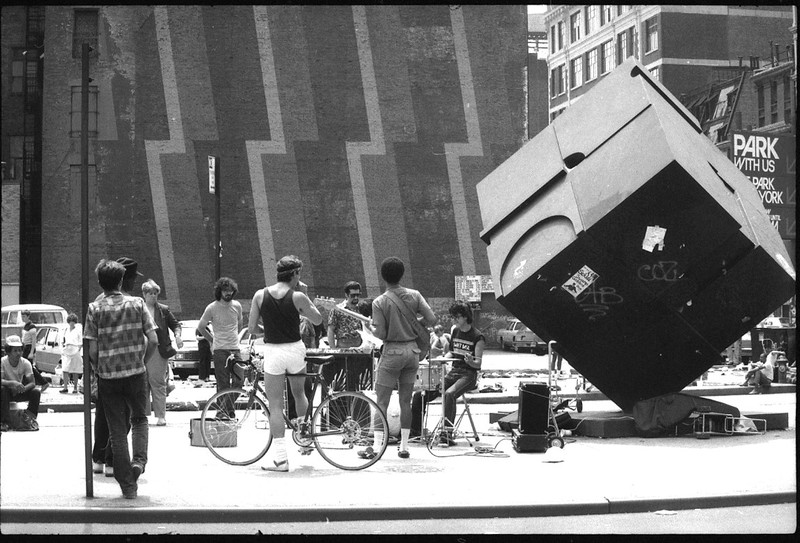On Course to Return a Spinning Cube to Astor Place
For most of its existence, pedestrians were able to freely and joyfully spin the black monolith known as the “Alamo” (more commonly referred to as the Astor Place Cube, or just “the Cube”) that sat between Lafayette Street and Cooper Square. That freedom to rotate came to an end in April 2022, after structural damage at the sculpture’s base was discovered to be causing a tilt to the cube; city engineers welded brackets to the cube that prevented the public from rotating the Alamo anymore. Recently, the city’s Department of Transportation announced a new plan for the Alamo that would restore the artwork to its former glory and bring back the ability to push and spin it for all passersby.

The plan, which received required approvals from the city’s Public Design Commission at its meeting on March 20, calls for the Alamo to be removed from the site next month, marking the fourth such restoration project in the cube’s history. Veerstag Art Fabricators LLC (which also handled a 2005 restoration) will transport the sculpture to its Connecticut facility for the repairs, which will be completed in July of this year; the cube will be on display at the Hamptons Fine Art Fair for a week before being reinstalled here.

The 15-foot-high cube was designed by Bernard “Tony” Rosenthal in 1967 as part of the Department of Cultural Affairs’ ‘Sculpture and the Environment’ program, which planted 25 temporary public artworks around the city. The Alamo, as the Astor Place structure was eventually named by Rosenthal’s wife, proved to be so popular with the public that it became a permanent installation.
When first installed, the Alamo sat in the middle of a traffic island, separated from the “mainland” by Astor Place. That setting, however, elevated that “ordinary ‘found space’ setting from mere traffic flow to public space” in the words of architecture critic Ada Louise Huxtable. Today, with that portion of Astor Place pedestrianized, the island is part of a public plaza that affords even greater access to the cube.

Tony Rosenthal, who will be a posthumous honoree at the Hamptons Fine Art Fair (he died in 2009), enjoyed the activity that always seemed to surround the sculpture. “The fact that it moves allows people to participate,” he noted in a biography posted on his estate’s website. “And even the fact that people climb on it … It all shows participation of the people in a way that it doesn’t matter whether they know about it or not; they enjoy it.”
He summed up the popularity of his creation by stating, “It’s a friendly object.”
